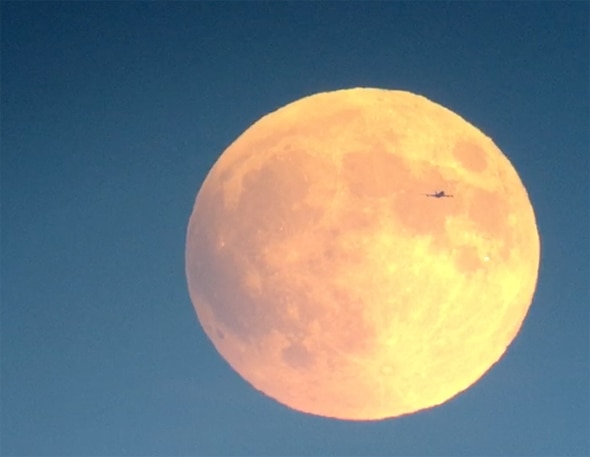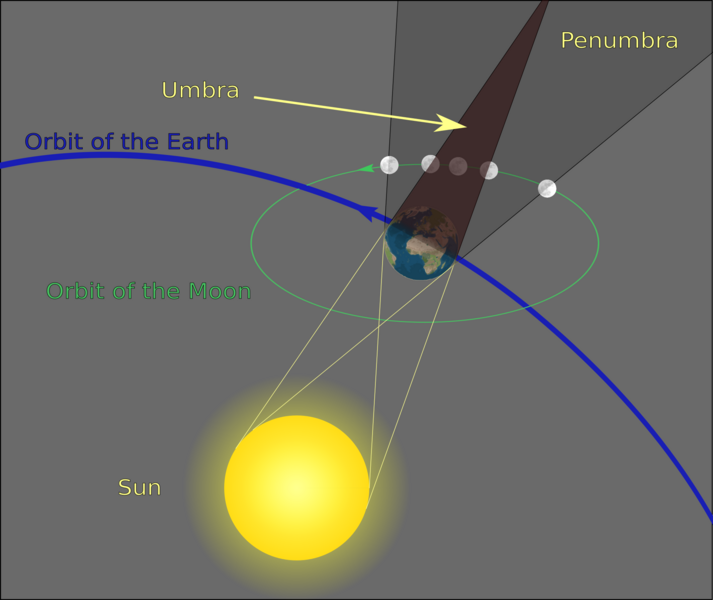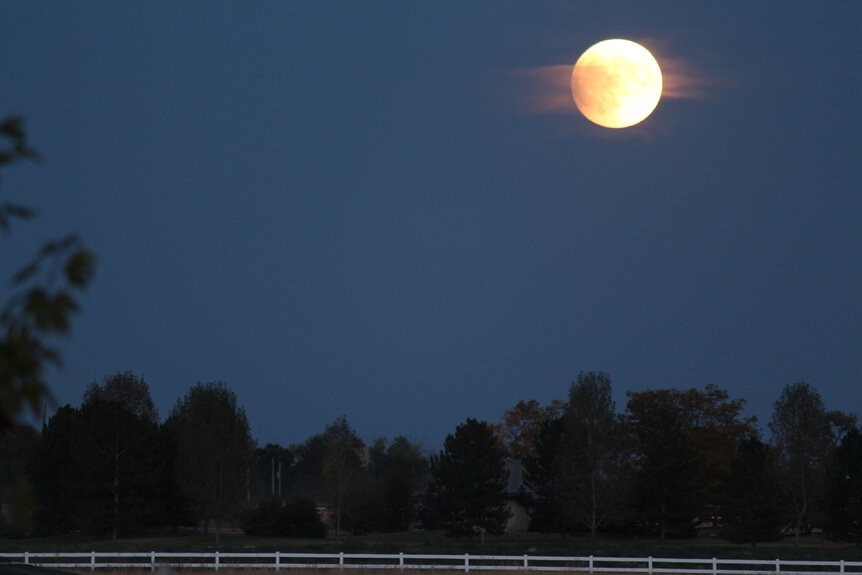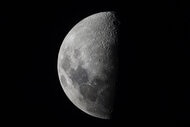Create a free profile to get unlimited access to exclusive videos, sweepstakes, and more!
How to watch this weekend’s total lunar eclipse — the last one for two years!

This weekend — Sunday night/Monday morning — the Moon will slip completely into the Earth's shadow, creating a total lunar eclipse. Bit by bit it will darken, then possibly glow ominously red once it's completely shadowed. This eclipse strongly favors folks in North and South America, so if that means you, read on!
A lunar eclipse occurs when the Moon is directly opposite the Sun in the sky. The Earth casts a long shadow in space, so when the Moon's orbit brings it into that shadow it darkens. Another way to think of it is that if you were standing on the Moon, you'd see the Earth block the Sun in your sky.
The Earth's shadow is shaped like a long, thin cone. There are actually two shadows, one cone nestled inside the other; the outer one is called the penumbra and the inner the umbra. From the Moon's point of view, when it enters the penumbra the Earth just starts to block the Sun. It blocks more and more, and then when the Moon enters the umbra the Earth completely blocks the Sun.
From Earth we see the Moon start to dim as it enters and passes deeper into the penumbra (for quite some time this is difficult to see, as the effect is minor, but it becomes more obvious the deeper the Moon gets into the penumbra). Then the darker umbra starts to fall on the edge of the Moon, which bites deeper into it over time until the entire Moon is dark — that's totality, when the Moon is completely inside the darkest umbral part of the Earth's shadow. Some time later the Moon begins to leave the umbral shadow, ending totality. Then the trailing edge of the Moon leaves the umbra, and the dark, obvious part of the eclipse is over. It ends completely when the trailing edge of the Moon leaves the penumbra.
This video of a 2014 lunar eclipse from my friend and astronomer Adam Block shows what to expect:
So when does all this happen? Here are some timings listed for you so you know when to watch.
The eclipse officially starts at 02:36:28 UTC Monday morning — subtract 5 hours for US Eastern Time (so 9:36 p.m. Sunday night), 6 hours for Central, and so on. This is when the Moon starts to enter the penumbral shadow, so you may not even notice. But it also means that the eclipse starts after moonrise and sunset for everyone in North and South America, so the sky will be dark.
The edge of the Moon enters the dark umbral part of the shadow just under an hour later, at 03:33:54 UTC (10:33 p.m. Eastern). Totality starts at 04:41:17 (11:41 p.m.) and lasts for just over an hour, ending at 05:43:16 (12:43 a.m.). The Moon leaves the umbra entirely at 06:50:39 (01:50 a.m.) and the eclipse ends completely at 07:48:00 (02:48 a.m.). Maximum eclipse — when the Moon is deepest into the umbra — is at 05:12:14 (12:12 a.m.).
That's the nice thing about this eclipse for those of us in the Americas: We can see the whole thing, and totality occurs at a decent time.
And you don't need any fancy equipment or anything like that. If you're able, all you have to do is go outside and look up! Heck, even the "going outside" bit is optional; if you have a window facing the right way you can stay inside. Even from the heart of a city it's easy to see. It might be best to get out early to find the Moon before it's eclipsed; when it's in totality it gets so faint it can actually be difficult to find.
Taking pictures of the eclipse isn't hard if you have a decent camera and a tripod. In 2015 I used my own spotting telescope with a phone attached to take video; the Moon was still close to the horizon when the eclipse started, and I caught two airplanes passing in front of it:
As it happens, this eclipse occurs when the Moon is very near perigee, the closest point in its elliptical orbit to Earth. In fact, perigee happens just a few hours later! The Moon will be about 353,000 km from Earth at the time, while the average distance is about 382,000 km. Because of this the Moon appears a bit larger in the sky, something less than 10% bigger than average. I doubt you'll even notice — that's not a huge change, and it's hard to compare the size of the Moon one night versus a night a week before or after — so don't buy into the hype of this being a "supermoon" or anything like that.
I'll add that some people like to call this the "Blood Moon," because during totality the Moon can turn a shade of blood red. That happens because sunlight filtering through Earth's air gets redder (that's why the Sun looks redder at sunset), and from the Moon during totality all the light is filtered through Earth's air. Only the red gets through to illuminate the Moon, making it look red. It's a fun name, sure, but it's not official or anything; mostly people use the term for clickbait.
Funny, too: From the Moon during totality, the light you see scattered by Earth's air comes from the edges, and since the Sun is on the exact opposite side of the Earth, that means you're seeing all the sunrises and sunsets on our planet at the same time!
That's way cooler than calling this the bloody supermoon.
I explain all this stuff in my episode of Crash Course Astronomy: Eclipses (the Moon stuff starts at 6:44, but there's good info in the whole thing) … including why we don't get an eclipse every full Moon (spoiler: The Moon's orbit it tilted, so it usually passes above or below the Earth's shadow in the sky).
I said you don't need any equipment to see the eclipse, but it's nice to get a better view than the eye provides. Binoculars are probably best, but a telescope is cool too. Perhaps an astronomy club near you has a star party this weekend; if so, that's a festive way to watch.
If it's cloudy where you are, or you're on a part of the Earth facing away from the Moon (so the Moon isn't up during the event), you can watch a live stream of it starting at 03:30 UTC care of the Virtual Telescope Project. Weather permitting, I may very well be out with my own telescope and spotting 'scope doing a live Periscope stream; check my Twitter feed for that. I'm sure there will be other live streams; check your favorite search engine for more.
This is the last total lunar eclipse anywhere on Earth until May 2021, and the last one we'll see from the Americas until May 2022, so I hope you get a chance to watch. Enjoy the marvels of the night sky! It's free, it's fun, and it's really quite beautiful.
















